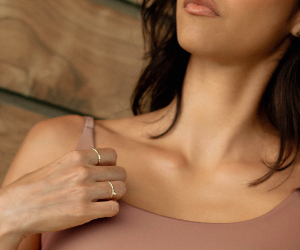We know it can be challenging for both patients and surgeons to select the most suitable implant for a breast augmentation. With this in mind, we created Motiva Implants® and accompanying consultation tools to offer the most comprehensive range of implant types to suit women with a variety of body types.
While basic tools to help select the right implant type, size, and shape have included samples or rice bags, Motiva® provides more advanced, proprietary tools that allow both patients and surgeons to visualize potential breast enhancement results more accurately – and thus, make the most appropriate implant choice.
To begin with, Motiva® offers the most comprehensive range of implants of all major implant manufacturers. All Motiva Implants® are developed with an advanced smooth surface, so patients don’t have to worry about experiencing the potential side effects associated with macrotextured surfaces.
The Motiva®range includes four main implant types:
- The Motiva® Round, for a fuller upper breast that provides a perkier, more youthful appearance
- Ergonomix® Round (or simply Ergonomix®), the world’s only ergonomic implant designed to mimic the look, feel, and movement of real breast tissue
- Anatomical TrueFixation®, the world’s only anatomical or teardrop-shaped implant on the market with a smooth surface/shell
Intraoperative Sizers
Sizers are essentially sterile, single-use/temporary implants that are meant to be used by a surgeon during plastic or reconstructive surgery. Once the surgeon creates a pocket in the chest area for the implant to be inserted into, a sizer is placed inside it to check that the pocket’s size and the sizer’s volume and shape are appropriate for the patient.
After the right combination of pocket and implant size is determined, the sizer is swapped out for the matching final implant.
Motiva® sizers are manufactured to resemble their corresponding implant’s characteristics, with one important distinction from competitors: the final Motiva Implants® are light blue, while Motiva® sizers are purple. Applied with biocompatible dyes, these colours allow surgeons to easily distinguish between them while in the operating room.

